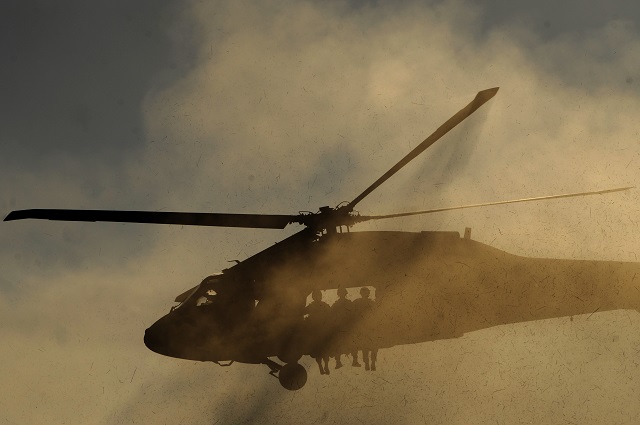The US Air Force expects to begin converting 21 second-hand US Army L-model Black Hawks to the HH-60G Pave Hawk standard for combat rescue missions “later this year”.
Introduced during the Reagan administration in 1982, the Sikorsky H-60-based Pave Hawk fleet has depleted from 112 to 97 helicopters since the type's introduction. Fifty of those remaining 97 platforms have sustained battle damage over the course of 15,000 rescue missions since 2001, mostly in Iraq and Afghanistan.
The air force has already spent $372 million developing and purchasing modification kits for those 21 Black Hawks and another $71 million is earmarked in the service's fiscal year 2017 and 2018 budget plans to complete the project and insert them into the pararescue force, service budget documents note.

Sikorsky UH-60L Black Hawk
US Army
In written testimony to a congressional panel on rotorcraft modernisation on 16 March, the service says $91.4 million has been requested for fiscal 2017 to support modernisation of the HH-60G fleet, even as the new Sikorsky HH-60W combat rescue helicopter enters development for fielding in 2020. Of that money, the majority begins conversion of the analog-cockpit UH-60Ls by adding Pave Hawk capabilities like an air refuelling probe, colour weather radar and forward-looking infrared sensor.
Pave Hawk capacity has been a major problem for the air force since its cancellation of the combat search-and-rescue (CSAR-X) programme, which would have procured 141 Boeing HH-47 Chinooks.

Sikorsky HH-60G Pave Hawks
US Air Force
HH-60G operators have “repeatedly landed in contested areas to recover 5,400 injured American and Coalition soldiers, sailors, airmen and marines” since 2001. Because of their age and high operational tempo, 37 Pave Hawks underwent unscheduled depot maintenance in 2015, or 38% of the fleet.
Separately, the air force will put Bell-Boeing on contract in June to build a single CV-22B Osprey that Congress funded as an attrition reserve. It will be delivered “in the first quarter of fiscal 2020”.
Operated by US special operations forces, one CV-22B has been lost in combat and one in training. There are currently 46 in Air Force Special Operations Command's (AFSOC) inventory out of a required 50 aircraft, and the remaining four will be delivered by Bell-Boeing “later this calendar year”.

Bell-Boeing CV-22B Osprey
US Air Force
AFSOC chief Lt Gen Bradley Heithold recently called for “another two or three" CV-22Bs before production slows down or goes cold.
The CV-22B carries significantly more defensive systems and armour than the US Marine Corps MV-22B type and has a unique supply base.
“We didn’t build attrition into the force,” Heithold said at the Air Warfare Symposium last month.

US Army
In another development, the Air Force Research Laboratory is preparing to trial a more compact version of its "degraded visual environment" sensor that will allow helicopter pilots to land safely in brownout conditions.
The "high-resolution three-dimensional imagine laser detection and ranging (LADAR) system" was successfully demonstrated in 2014, and a new version has been produced that can be integrated into a modified AAQ-29 FLIR turret for the Air Force HH-60G Pave Hawk. The AAQ-29-compatible LADAR will be flown at the US Army's Yuma proving ground in Arizona in April, according to the air force.
Source: FlightGlobal.com



















